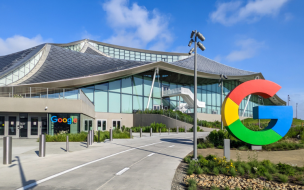The latest figures, from Cranfield School of Management, show that women now make up 19 per cent of FTSE 100 and 15 per cent of FTSE 250 board positions, the highest female proportion in more than a decade.
27 per cent of new appointments to boards in the FTSE 100 went to women, with 30 per cent of FTSE 250 board positions being taken by females. But just four of the 33 new executives appointed this year in the FTSE 100 were female.
In London, regarded as Europe’s business hub, only three companies in the FTSE 100 are led by women: Burberry, easyJet and Imperial Tobacco - although that number is set to be given a slight boost by Royal Mail’s introduction to the index next month, led by businesswoman Moya Greene.
It is clear women are underrepresented in the highest echelons of business management, and 94 per cent of FTSE 100 companies now acknowledge the need for greater boardroom diversity, according to the same report. 65 per cent of those firms stated a clear policy to achieve this, but less than half opted to disclose objectives they had in place to increase the number of women in their boards.
In Fortune 1000 companies, these figures are even worse. Just 4 per cent of CEOs in that index are female and only 16 per cent of its board members are women. “Businesses must ensure that they continue to improve female representation in the boardroom if we are to fight off European intervention,” the report said.
“Companies need to be investing in their own talent if we are truly to see a culture change… to continue to demonstrate that within this competitive, global economy, boards that have a better gender balance are able to make better decisions which can only lead to better performance.”
Beatrice Bartlay, Managing Director and Founder of 2B Interface, commented: “It comes into question whether boardroom quotas are really having an effect on the greater issue of gender inequality in the workplace when we see that only 12 per cent of new executives to FTSE 100 companies in the past year were female.”
Britain’s Minister for Women and Equalities, Maria Miller, noted that although the UK has made significant progress removing barriers for women in achieving their full potential, what “we also need to see is business embracing a wider cultural change”.
Sir Roger Carr, the CBI President, commented: “Greater diversity improves atmospherics, dynamics and decision-making in British boardrooms. Businesses can only secure the best available individuals if they look at the widest pool of candidates
“These figures show… business leaders must roll up their sleeves and redouble their efforts to improve recruitment, mentoring and succession planning.”
Female percentages for women enrolling in MBA programs has been much lower than that for males, although there is some progress made in US business schools.
According to a report released in August this year, the 2010-2011 classes for the top ten non-US MBA programs were just 30.3 per cent female. A quick snapshot of the top-ranking UK b-schools reveals that no MBA program has an equal percentage of female to male MBAs. Cass Business School, based in London, was the closest, with last year’s cohort featuring a 45 per cent female percentage.
Diversity is a key learning experience for most MBAs, and international exposure is often a highlight of studying at b-school. But while international diversity is consistently at a high percentage at most MBA programs, gender diversity is much lower. It is a sad fact that women are still underrepresented at business schools as well as in boardrooms.
Although there is no suggestion that any MBA programs intentionally favour males over females, figures from Europe contrast starkly with some American universities. According to TopMBA, at the Naveen Jindal School of Management at the University of Texas at Dallas, last year’s cohort had a 60 per cent female percentage. At Georgia State University, J. Mack Robinson College of Business, that figure was even higher at 62 per cent.
Several female business school deans hit the headlines in recent years, with women deans now at the helm of Michigan’s Ross School of Business and Arizona State’s Carey School of Business, among others. But the low percentage of female MBA students reflects the amount of female deans at the world’s top business schools - just 18 per cent of AACSB-accredited b-schools have female deans.
In March this year, BloombergBusinessweek reported that for MBA programs, female enrolment at schools with female deans was higher than those run by men. Although on EMBA and undergrad business courses, female deans actually had a lower female enrolment than their male dean counterparts.
Sarah Gardial, dean of Tippie College of Business at the University of Iowa, thinks female role models at business school are important for prospective MBAs. “They want to see role models for themselves in the organizations they walk into,” she said at the time of the report. “The more we can make that happen, the more we’ll be able to attract diversity. All other things being equal, who’s at the helm is important.”
Although many students apply to business school, many more are turned away. The top institutions are reserved for the crème of the crop, and admissions processes can be tough.
Although there are a lower percentage of females on MBA programs compared to males, these figures contrast with the record numbers of women are taking the GMAT.
According to the Graduate Management Admission Council (GMAC), last year a recording 122,843 GMAT tests were taken by women – compared with 106,700 in 2011. Women now represent 43 per cent of total GMAT tests taken, and in China that number is even higher: 65 per cent of the country’s test takers were female.
The waters are muddied further when you considered that in the US, the same figure is at just 39 per cent.
While women are taking the GMAT in higher numbers than ever, those that do study MBAs often turn to MBA Clubs to promote gender diversity. Last month, BusinessBecause reported that two female HEC Paris MBAs had re-started the HEC Women in Leadership Club (WiL).
Paula Quinones Rozo and Neisha Machado Fernandes run the club with the hope of inspiring the next generation of female business leaders. They help the WiL members connect, develop links to the corporate world and, ultimately, help female students get MBA Jobs.
For those seeking a career in Europe, gender diversity is increasing in the FTSE 100 and FTSE 250, but women still remain grossly underrepresented at the top of the corporate world. Although more women are taking the GMAT, there are still vastly more male MBAs than there are females – and many more male deans.
Two thirds of FTSE 100 companies have a clear policy to achieve gender diversity, and there is a combined effort to promote the benefits of a balanced business world.
Targets have been set, and London Stock Exchange companies are on course to achieve them.
But even at business school, we remain a long way off.
RECAPTHA :
91
3c
c0
40








